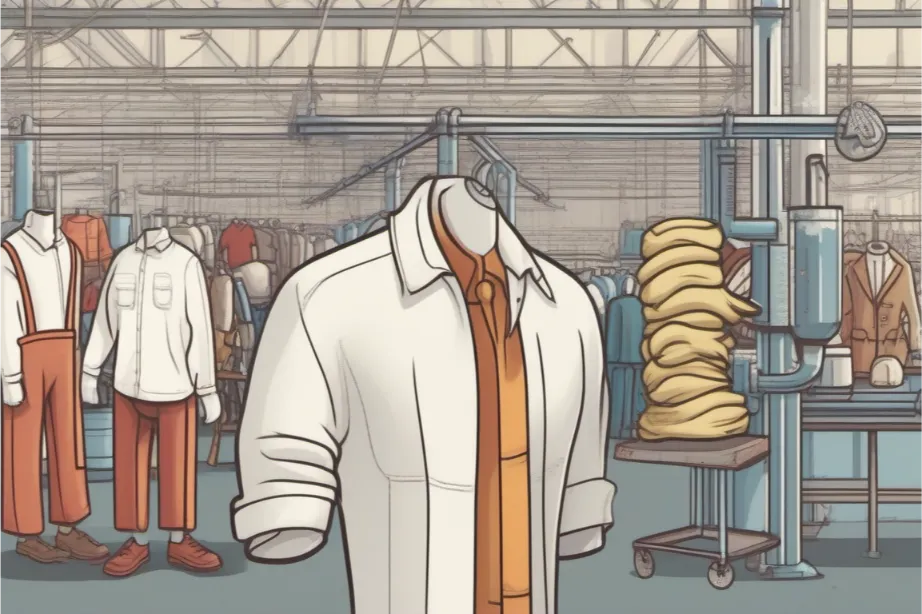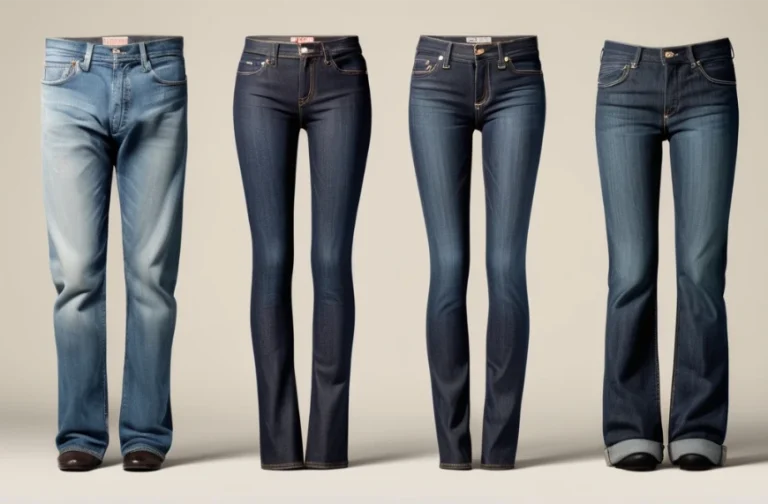Fast Fashion Carbon Emissions is 2% to 8% of Global Carbon Emission
The word fast fashion is referred to as the mass production of inexpensive clothing Items to satisfy the latest trends of the consumers.
The fast fashion model of business quickly produces garments at a low price. To do so, the companies prioritize mass production and quick turnaround time and affordability.
As a result, deliberately or in deliberately they contribute to the carbon emissions.
Companies like Zara, H&M, forever 21, Walmart are the significant players of the fast fashion industry. This industry contributes heavily to global warming.
The manufacturing process of the fast fashion industry relies on energy intensive production and transportation. So, they left a footprint of carbon.
They are responsible for large production and after consumption disposal of the fashion items. The post is dedicated to finding out the contributions of fast fashion carbon emissions in the global context.
We will also suggest different ways to reduce the environmental impact of fast fashion.
How Much is Fast Fashion Carbon Emissions?
The fast fashion industry is responsible for about 2% to 8% of the global carbon emissions according to the U.N environment program and Mcellen Arthur foundation. Their report shows the fast fashion industry leaves an immense footprint of carbon emissions.
That emission causes a greenhouse gas. The nature of high energy intensive production and logistical approaches contributes to the carbon footprint. There are some key contributors of the industry that are responsible for heavy carbon emissions.
Source: Fashion’s tiny hidden secret (unep)

Supply Chain
Much carbon is emitted across the supply chain of fast fashion. There are several factors that determine the supply chain of this industry. Each of the steps of this supply chain contributes to a significant amount of carbon emissions.
The raw material extraction, manufacturing of the clothing, transportation and consumer uses trend are the primary determiner of carbon emissions.
Raw Material Extraction
Like any other manufactured industry, the first step of fashion production is to extract the materials from nature. Things like farming cotton use this huge amount of water.
Extracting the synthetic fiber like polyester or nylon from petroleum or other chemicals or wool from the living animals can have a negative impact on the environment.
This extraction is highly responsible for emissions.
Manufacturing Process
The production of fast fashion, especially the dyeing and finishing process requires a huge amount of energy.
The dying process uses toxic chemicals and a lot of water that result in carbon emission and air pollution.
The fast fashion brands need speed production and fast lead time. That also contributes to the high number of emissions.
Most of the fast fashion items are made in low-cost countries that do not care about the environmental impacts.
Transportation
Fast fashion companies rely heavily on the transportation network. This transportation is often used by ocean or air freight.
Both of these transportation systems used carbon intensive energy.
This fast fashion company ships products worldwide and that needs a large amount of carbon intensive transportation to reach the consumers.
This is also a significant factor for increasing carbon emissions of the supply chain.
Consumer Uses
The environmental cost is fast fashion does not stop when a product is purchased by customers. In fact, the customer’s regularly use fast fashion and dispose of the clothes also contribute to the carbon energy use and carbon emission.
The use of synthetic fibers like polyester contributes to producing microplastics during the washing and drying process.
This also adds to the environmental pollution. These clothes are discarded after as little as one use. So, these factors also have an environmental price to pay.
The Overproduction and Overconsumption
Fast fashion companies have a nature to produce more than it needs. The bands also push the consumers to buy the products frequently.
That’s why fast fashion consumers often overconsume.
This massive quantity of low-cost clothing can later cause excess stock. Some of the excess stocks can also directly end up in landfills.
This overproduction and overconsumption encourage high carbon emissions.
To keep the prices low, the producers use carbon intensive ways to make the product. This creates a cycle of wastewater and increased carbon emissions.
Fast Fashion and Environmental Impact
The fast fashion industry can contribute to the emission of carbon directly. That can contribute directly to climate change.
The accumulation of this gaseous waste pollutes the atmosphere. The rise of global temperatures.
We can see more extreme weather events and severe weather impacts like wildfires, floods and storms that damage agriculture, communities and infrastructure.
Increasing Environmental Challenges
The fast fashion industry extends carbon emission. It also contributes to environmental impact. 3% of the world’s arable land is used for cotton farming. The manufacturing process of cotton uses and wastes a lot of water.
It also uses a large amount of water to make synthetic fibers. The petrochemicals used for synthetic fibers, like polyester, or nylon can pollute the ocean.
These issues can compound in different stages. Study found that a simple t-shirt takes up to 20,000 liters of water to make. That significantly harms the biodiversity and disrupts the ecosystem.
What are the Solution to Carbon Emission in Fast Fashion
There are many ways to reduce carbon emission from fast fashion. The government, consumer and the producer, all stakeholders have some things to do to reduce the fast fashion’s emission of carbon. They can take on a sustainable manufacturing process.
They also can take recycling and circular fashion measures. They can use energy efficient manufacturing processes to reduce carbon emissions and increase sustainability.
Sustainable Fashion Alternatives
The most effective and economic way to reduce the carbon footprint of fast fashion is embracing sustainable measures to produce the products.
Organic materials like cotton Hemp and Tencel are eco-friendly alternatives to polyester. Polyester is made using petrochemicals.
Using natural fibers can help reduce the carbon emission of overall fast fashion.
Regular Recycling
The recycling process of the fast fashion industry keeps expanding. Circular fashion aims to reuse fashion items over and over in different ways by recycling.
This process can also increase the longevity of the products. They also can use take back programs to allow the customers to return old clothing for reuse.
Energy Efficient Manufacturing
The brands and the manufacturers need to use clean manufacturing technologies and state-of-the-art energy efficient manufacturing plants.
That can dramatically reduce the carbon emission and footprint.
Some of the companies use renewable sources for factories.
They also use low impact dying techniques to reduce the waste and cost of energy. This is also innovative to reduce the energy intensity and the carbon emission.
Consumer Awareness
The consumers and the buyers of the fast fashion industry have a great role to play to bring changes in the industry.
Most of the consumers are supporting the green manufacturing movement. They support sustainable manufacturing processes.
So, these shoppers push the manufacturers to adopt green manufacturing. In the fast fashion industry, this can help to reduce the environmental impact on clothing.
It’s also empowering the individuals with more informed purchases.
Government Policy and Regulation
The government and the industry regulatory bodies have a significant role to play. They can take stricter roles to curve down the fast fashion industry’s environmental impact.
It can include increasing carbon tax. Imposing strict emissions standards and also policies to incentivize the sustainable materials industry.
These commitments can drive collaborative efforts to a more sustainable future.
Future Technologies to Reduce Carbon Emissions.
There are several fashion bands that are making their way to reduce the carbon footprint. They understand that reducing the carbon footprint can also have a significant impact on the customer’s mind.
The customers are shifting towards the green manufacturing process. Brands like Patagonia are a leader of using recycled materials and they promote fair labor practices.
They are innovative in production. These companies use eco-friendly materials to maintain transparency. Some brands like Adidas and Nike are adopting sustainable materials.
They are also making fashion items from recycled polyester, organic cotton and biodegradable fabrics. This type of technology can play a role in reducing carbon emission.
Some of the companies are investing heavily on artificial intelligence and automation to optimize the production process and reduce the cost.
But a very few of the companies follow Paris agreement fashion pacts to align with the sustainability standard.
Some Last Words about Fast Fashion Carbon Emissions
As a key contributor to global carbon emissions. Fashion has a significant role to reduce the cost.
The transportation and consumer model that the fast fashion industry is using can drive carbon emission significantly. The industry relies heavily on synthetic materials.
These types of materials are energy consuming to make. The global supply chain needs to change.
In Sylvan Apparel, we are taking the challenge to reduce the carbon cost of the fast fashion industry.
That is why we are a business that is taking meaningful steps to reduce the carbon footprint. Consumers can choose to buy less and reduce carbon print.
To support the sustainability movement, we follow the government and international regulatory bodies policies to reduce the carbon footprint.
We also promote sustainable practices. Feel free to talk to us, if you are willing to make your products sustainably.







